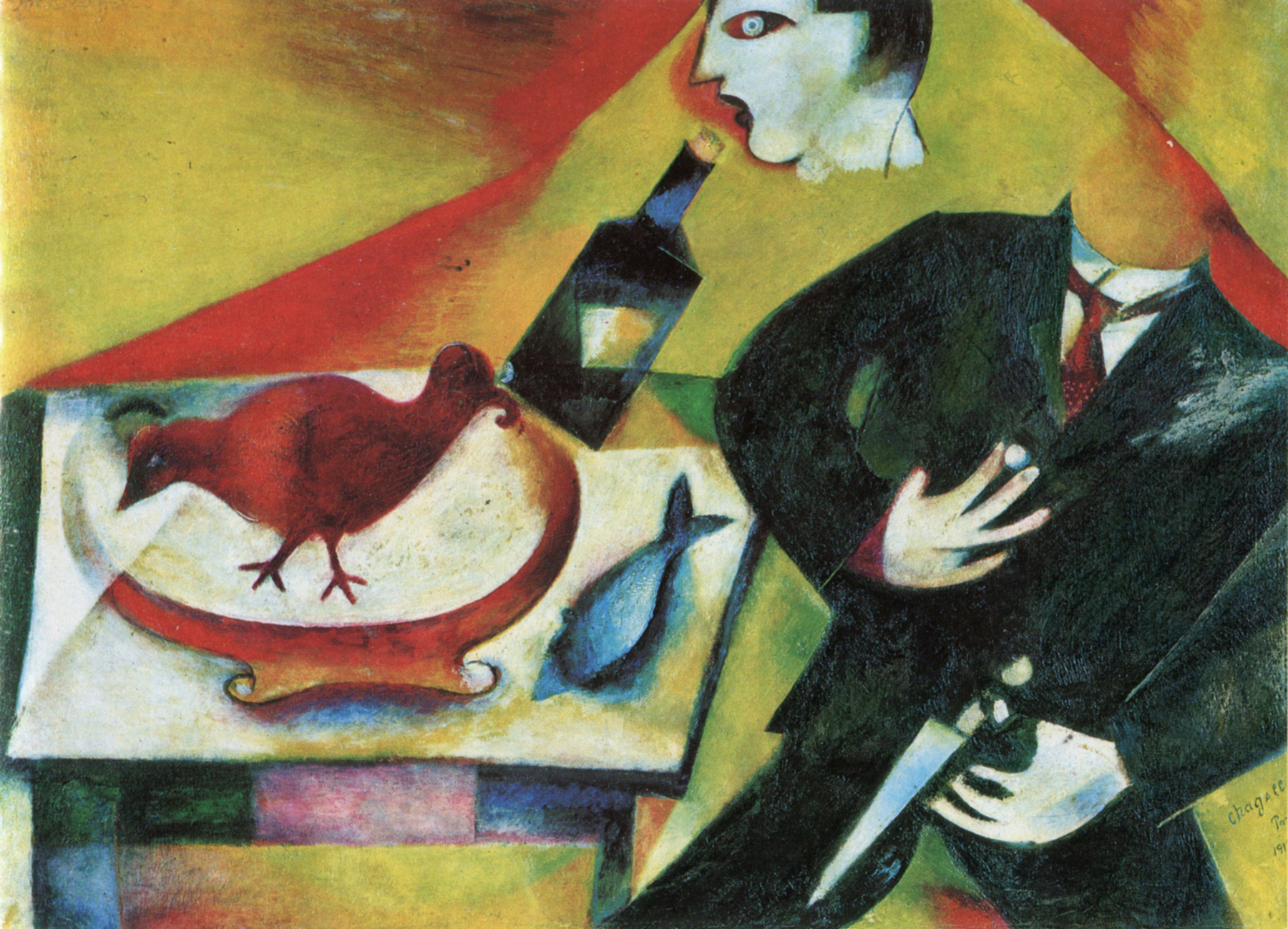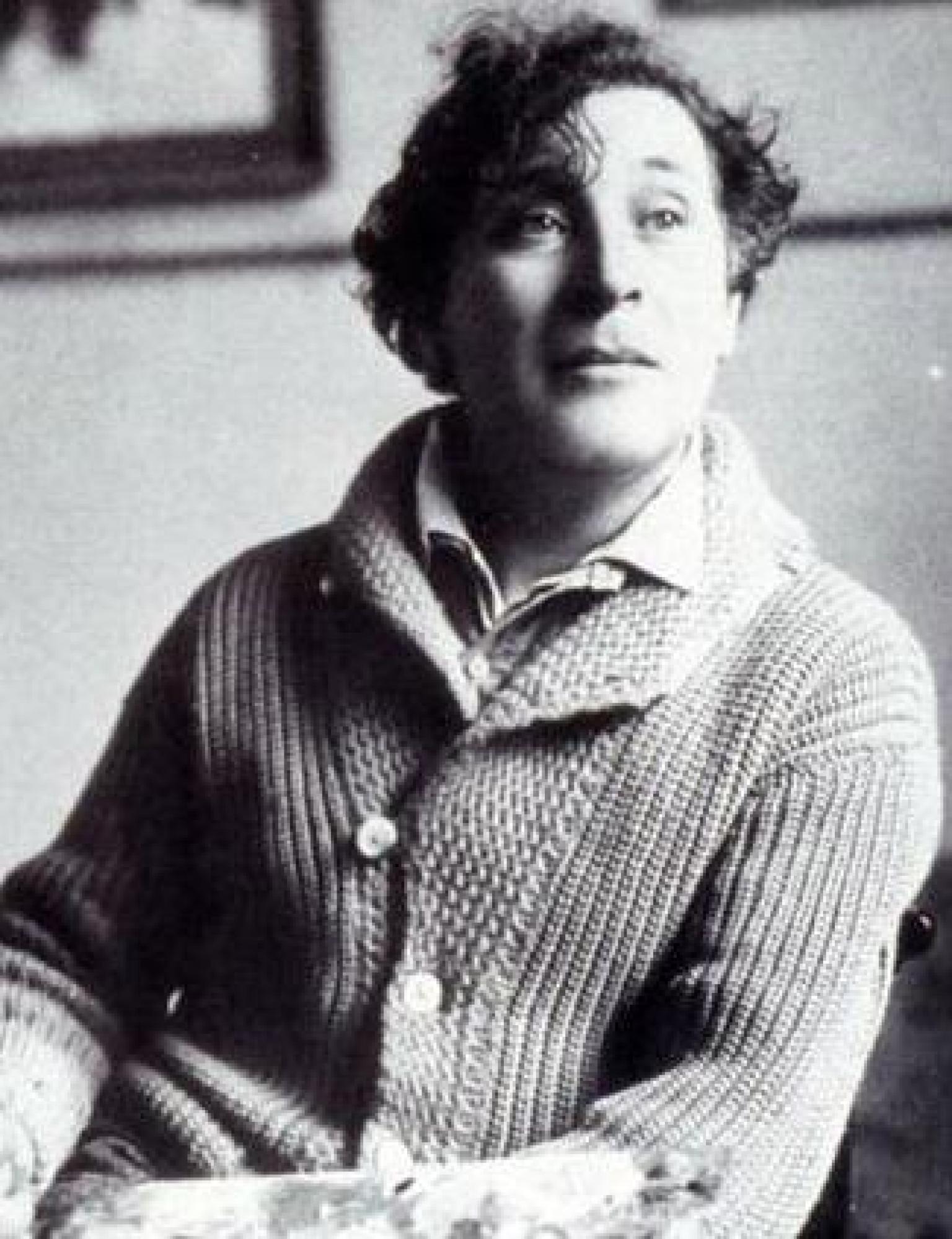Marc Chagall was born in Vitebsk, Belarus, in 1887 to a poor Hasidic family. The eldest of nine children, Marc Chagall studied first in a Jewish religious school before moving to a secular Russian school, where he began to display his artistic talent. With his mother's support, and despite his father's disapproval, Chagall pursued his interest in art, going to St. Petersburg in 1907 to study art with Leon Bakst. Influenced by contemporary Russian painting, Chagall's distinctive, child-like style, often centering on images from his childhood, began to emerge. From 1910 to 1914, Marc Chagall lived in Paris, and there absorbed the works of the leading cubist, surrealist, and fauvist painters. In an earlier gouache version of this subject, Chagall used a fair amount of anecdotal detail to suggest an interior scene: playing card lay on the table, together with a herring and a bowl of fruit, and there was even a cow peering through the window. When he returned to the theme in oils, however, he dispensed with the figurative background, attempting to structure space by means of colour alone. This absurd scene was even described by Kurt Schwitters, a German artist who worked in several genres and media, including Dada, Constructivism, Surrealism, poetry, sound, painting, sculpture, graphic design, typography, and what came to be known as installation art. Here it is: Kurt Schwitters: "On a Painting by Marc Chagall Playingcard drones fish, head in the window. Animal head yearning for the bottle. On the bouncing mouth. Man without head. Hand wags sour knife. Playingcard fish squander dumpling bottle. And a table drawer. Imbecile. And a button on the table encircled introvert. Fish presses the table, the stomach nauseous with swordscar. A drunkard shaft leers dumb the clever animal. Eyes thirst for the smell of the bottle".




The Drunkard
oil on canvas • 85 x 115 cm
 Marc Chagall
Marc Chagall